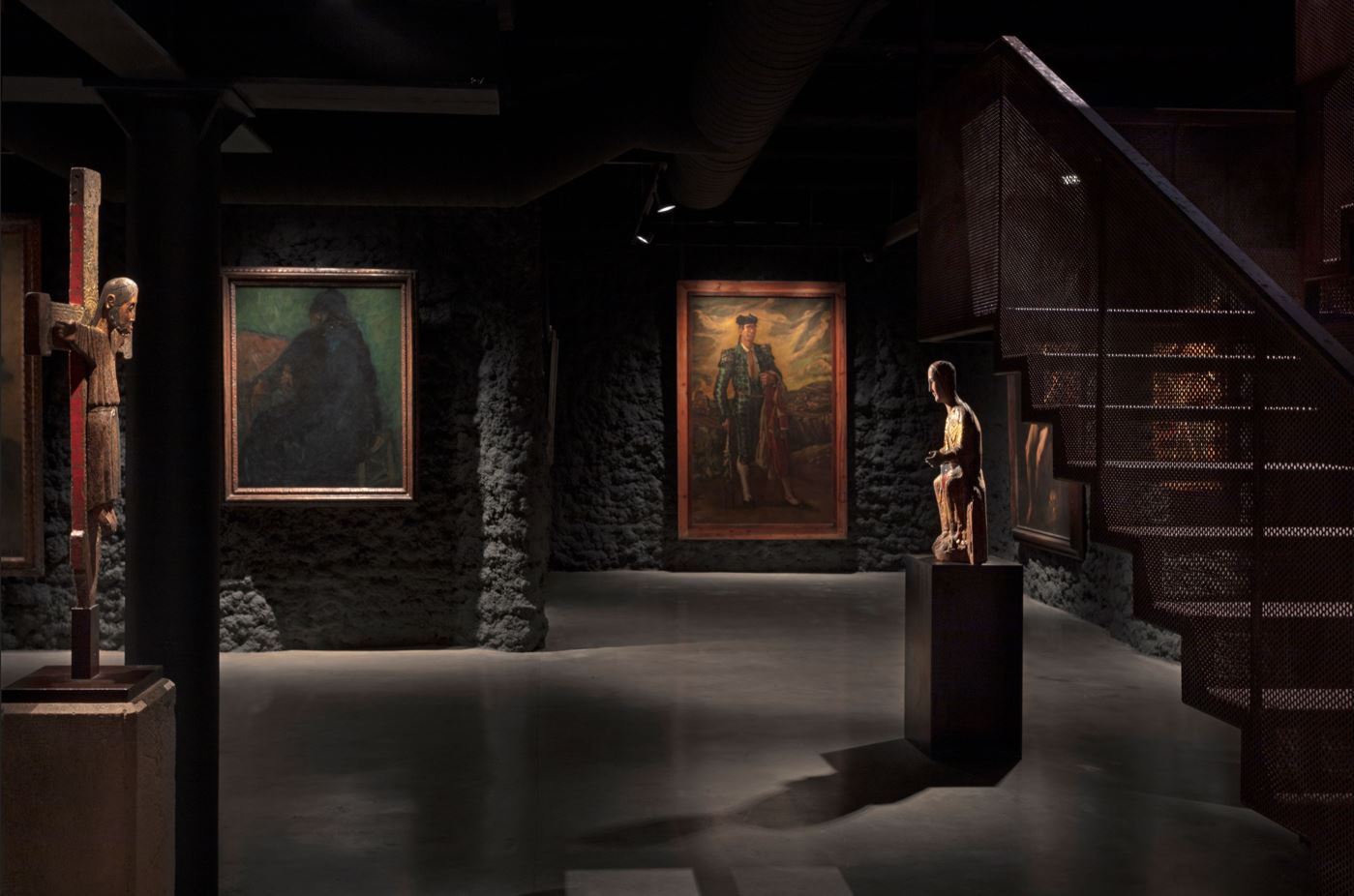Exhibitions
The revival of Sant Saver
The former hospital is now revealed as a unique artistic space that connects heritage and modernity.

What was once a hospital for sick clergy now resurfaces with a very different function. The walls of the old Hospital de Sant Saver, located on Carrer de la Palla in Barcelona, have been transformed into an unusual artistic space that gives new life to the stories that have slept within its walls for centuries, becoming the new headquarters of the Casacuberta Marsans collection.
The rehabilitation of this unique building, which preserves one of the few Renaissance facades in the city, was entrusted to the team of architects headed by Jordi Garcés, known for projects such as the expansion of the Picasso Museum, together with Daria de Seta and Anna Bonet. His work has involved a careful and respectful intervention with the history of the site, recovering the heritage value after decades of renovations that had deteriorated its original essence. One of the most prominent elements is the perforated sheet metal staircase that connects the three levels of the building, acting at the same time as a structure that allows you to observe the collection from different perspectives.
The works of art find their space in the most historically and patrimonially relevant rooms of this former hospital site: the church itself, the adjoining rooms and the underground crypt, where the collection is integrated with the architectural structure .

The Hospital of Sant Saver maintained its function of welcoming the sick until 1925, when the last patients were transferred to the Major Seminary of Retired Priests, in the Corts neighborhood. During the following years, this unique space witnessed several activities, first housing the antique dealer Agustín Mendoza, then the Puvill bookstore, a boarding house known as the Bordeus Boarding House, and a wine cellar. Although it was planned to be converted into a hotel in 2006, work was halted three years later due to a planning corruption scandal. Finally, it was acquired by the Casacuberta family, who promoted its recovery and conversion into a cultural center, with the aim of transforming it into a place dedicated to research and a meeting point for arts professionals.
The exhibition offers a meticulous selection of 50 works, a representative sample of the more than 300 pieces that make up the Casacuberta Marsans collection. Among them, we find great masters of Spanish painting from the late 19th and early 20th centuries, linked to the regenerationist thinking of the Generation of 98 and Black Spain, as well as pieces of medieval art from the Crown of Aragon and the painting that introduced modern art in the 20th century. Its opening tomorrow, Tuesday, November 5, with visits from November 11, will redefine the artistic landscape of the city and offer a unique opportunity to learn about part of a little-known heritage.
The works build a mosaic of the artistic history of the peninsula. Among them, notable pieces such as the central table of an altarpiece representing Saint John the Baptist and Saint John the Evangelist, possibly made by Lluís Borrassà or Gerau Gener , and from the Monastery of Santes Creus, stand out. This Gothic selection is completed by other tables such as the Santa Llúcia by Joan Mates and the Lament Triptych, attributed to the Master of the Legend of Santa Llúcia . Unique Spanish Baroque works can also be admired, including paintings by Luis de Morales and Mateo Cerezo . In addition, a portrait by Ramon Casas entitled Examination of Conscience (1890) and other figures by Joaquim Sunyer add a personal and human look. In modern painting, a mysterious portrait of a gypsy by Isidre Nonell stands out, a winter scene by Rusiñol during his time in Paris, as well as works that capture the essence of the time: El nen simple by Carlos Sáenz of Tejada , The embroiderer by María Blanchard , Billiard players by José Togores and El Lechuga by José Gutiérrez Solana .
This new space celebrates the artistic talent of recent centuries, and the selection of works traces a journey that is both a visual chronicle and a tribute to a past rich in nuances.









